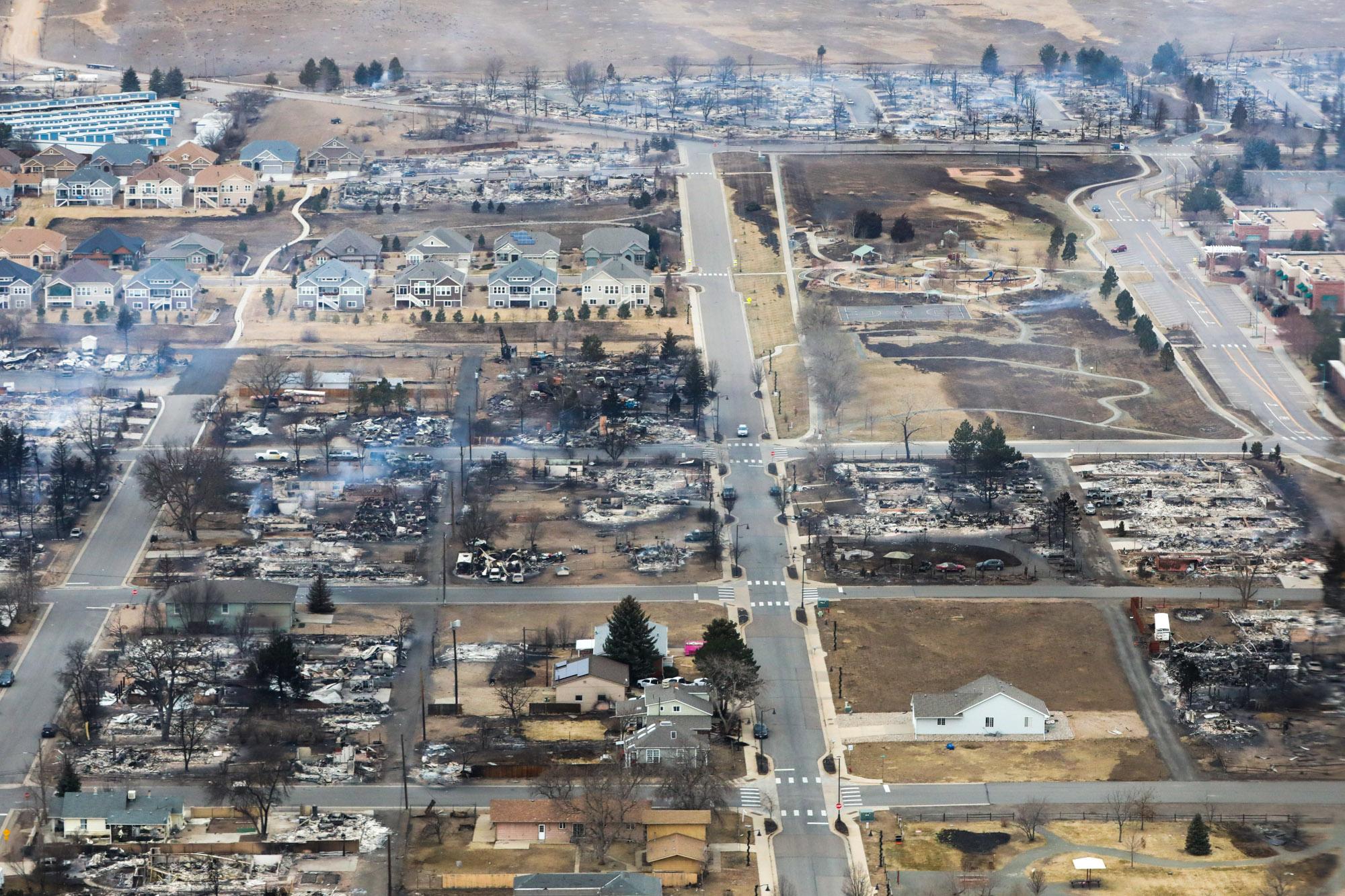
The devastating wildfires in California are bringing back a lot of painful memories of the Marshall Fire that swept through Boulder County in 2021, causing more than $2 billion in damage and destroying more than 1,000 homes. To date it's the most expensive wildfire in Colorado.
Sadly natural disasters and emergencies are often unexpected and to a large degree beyond our control, so planning ahead and preparation is key to protect yourself and those around you.
Micki Trost with the Colorado Division of Homeland Security and Emergency Management (DHSEM) joined Colorado Matters to share some helpful tips on how to prepare yourself now, before a disaster happens.
Here are some of the top tips and resources from DHSEM:
- Sign up for emergency notifications where you live, work, and play. Find Colorado county alert information.
- Plan more than one evacuation route away from your house. It’s helpful to have options in case the disaster removes one way out.
- Think about how to reconnect with your loved ones during different times of day or if you are in different places. Have a gathering point along each of your evacuation routes.
- If communication systems are jammed because of the disaster, it can be harder to call people who are nearby. Have a contact outside of your city or state that everyone can call for updates if you can’t reach each other directly.
- If you’re overwhelmed with what to pack, it can be helpful to review a general go-kit or evacuation list like Ready.gov. Make your go-kit unique to your needs.
- Think about what you or your loved ones (don’t forget pets and animals) would need if you are away from your home for 3-7 days.
- Consider what you need to:
- Communicate: Don’t forget your charging cords and battery packs/charger banks!
- Maintain your health and safety: Masks can help reduce negative impacts from smoke.
- Maintain your independence (e.g., service animals, mobility devices, etc.).
- Stay connected with your support services (e.g., home care, WIC, etc.).
- Move yourself (transportation).
- It’s helpful to have layers of clothes to be ready for different weather.
- Evacuation tip: grab your laundry baskets. This is a quick and easy way to have clothes that are in season for everyone in your house.
- Don’t forget good footwear!
- Include something that brings you comfort in your go-kit. This could be as simple as a clean pair of socks or a piece of chocolate.
- Plan with others to consider where you can go while you are evacuated and for how long.
- Keep as much documentation as you can on the cloud. Normally, disaster assistance centers are set up quickly after a disaster. The process can be a lot easier if you have the documentation you need when you arrive.
Additional resources:
- Please see resources on wildfire smoke, water quality, preparing health care facilities, and more on the CDPHE Wildfire Preparedness, Response, and Recovery webpage.
- The Colorado Division of Fire Prevention and Control is another great resource to reach out to for more information. Their Public Information webpage has contact information.
- Their site also links to this great wildfire preparedness resource specific to CO: Live Wildfire Ready it includes a Colorado wildfire risk assessment map, a downloadable checklist to prepare your home for a wildfire (English & Spanish), and a downloadable Ready, Set, Go! Preparedness action plan checklist (English & Spanish)








